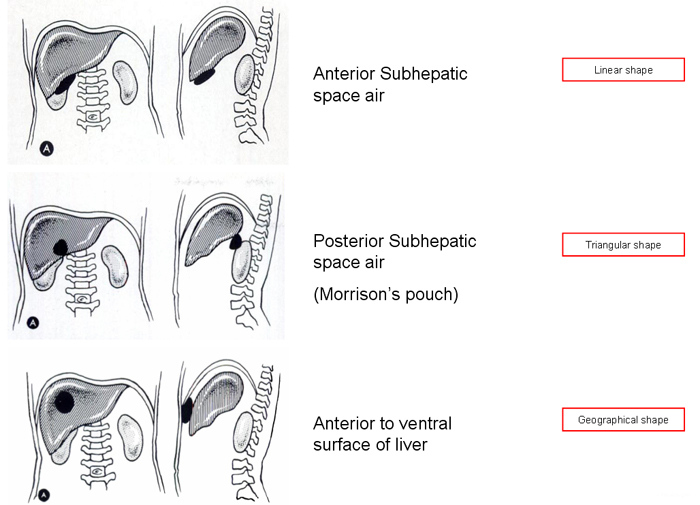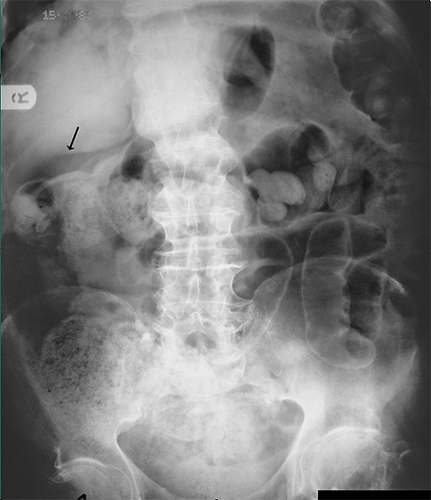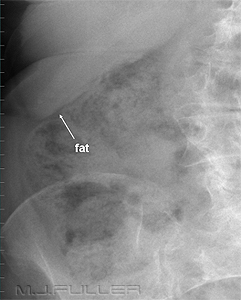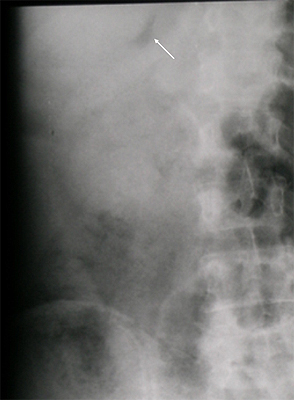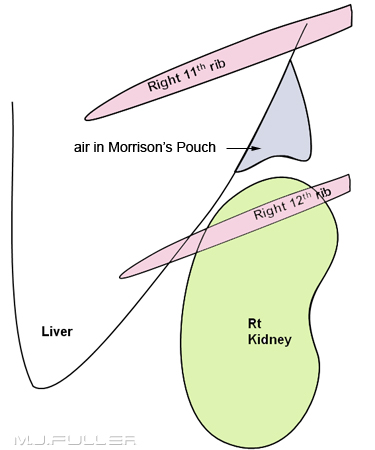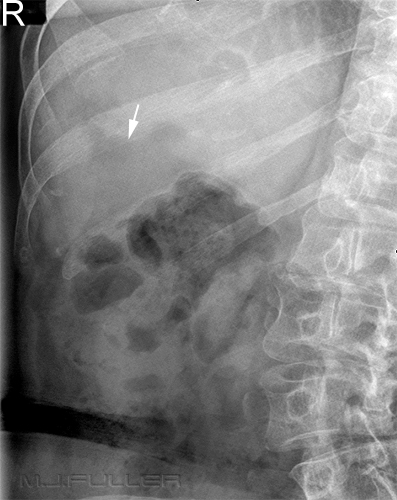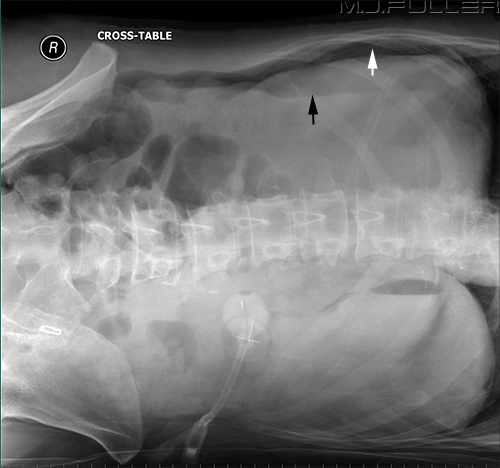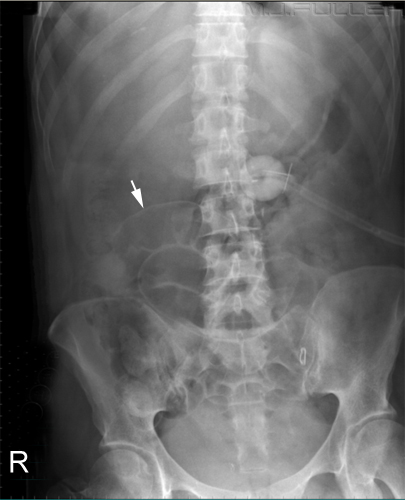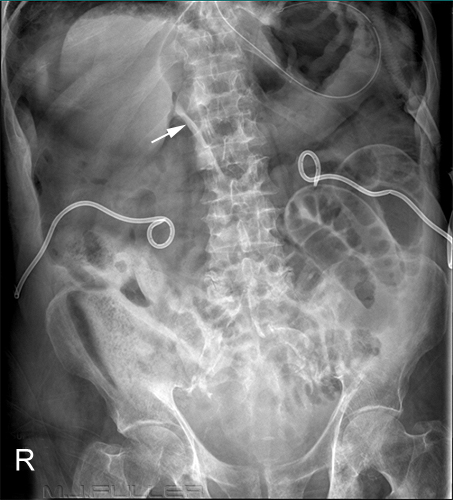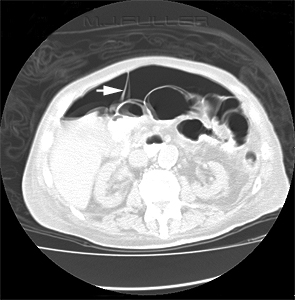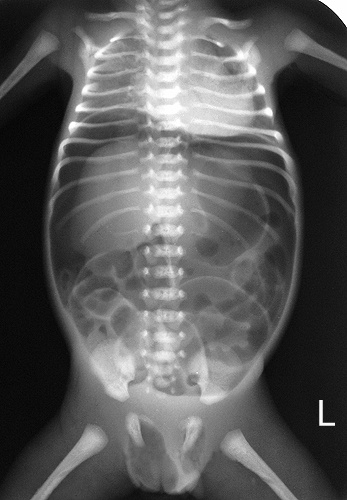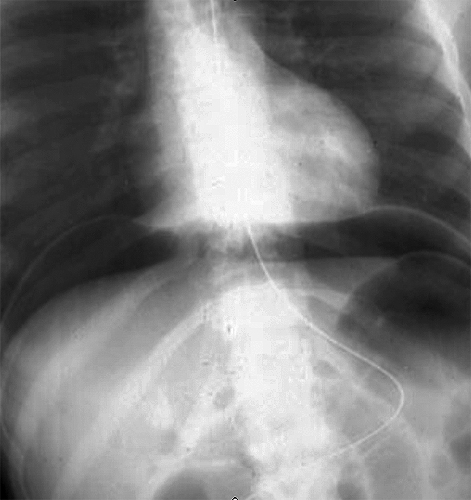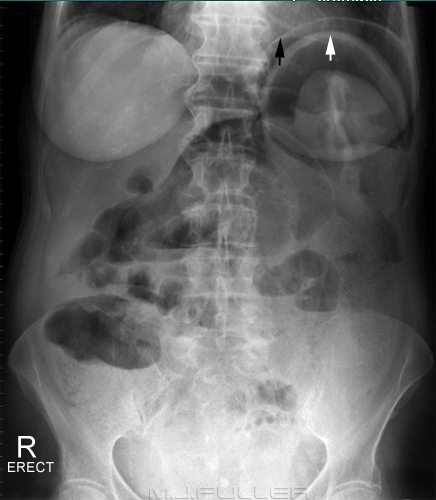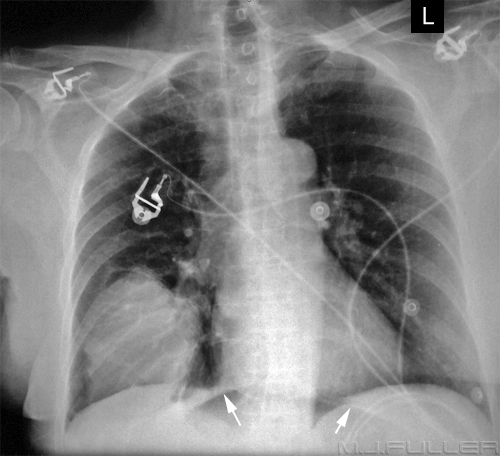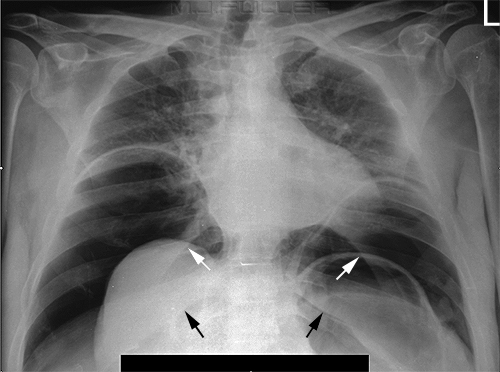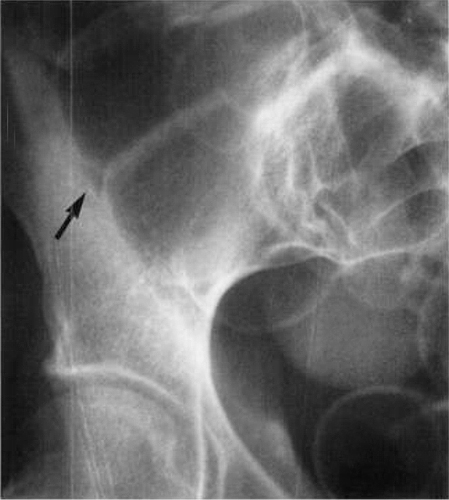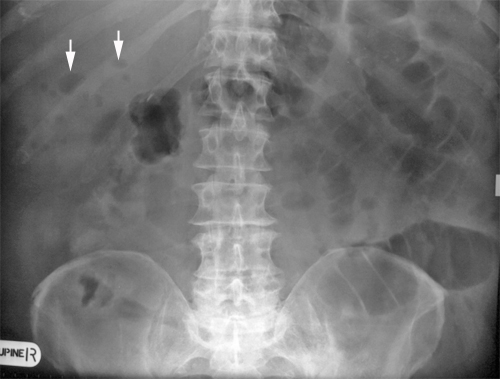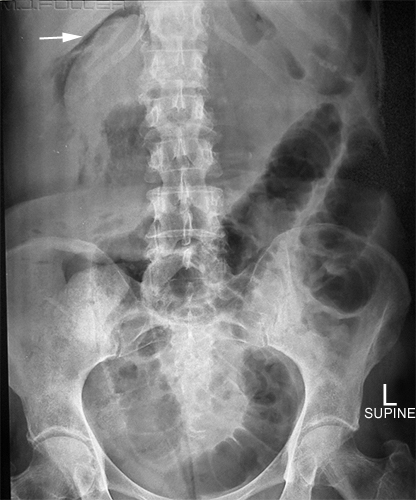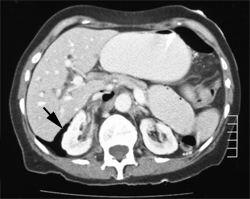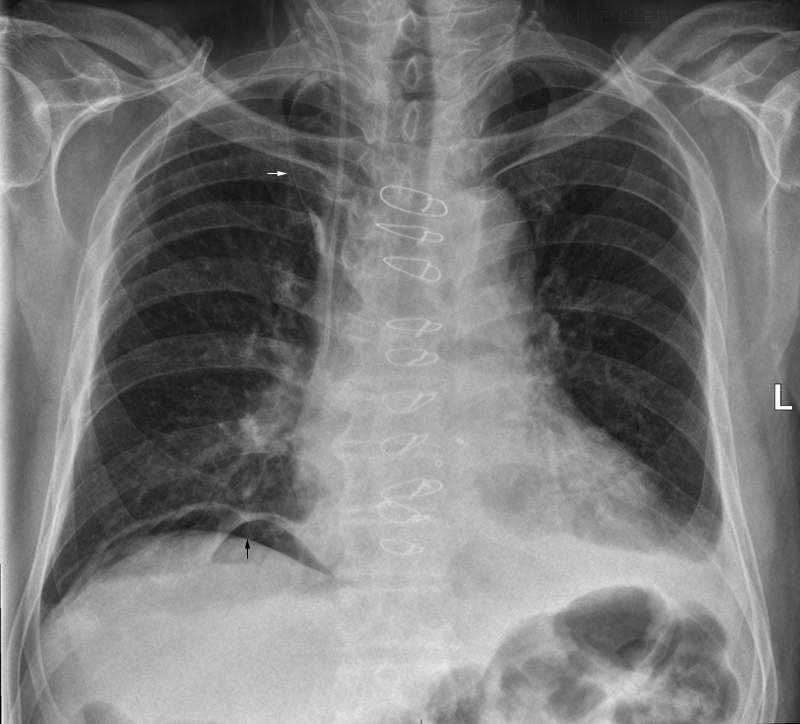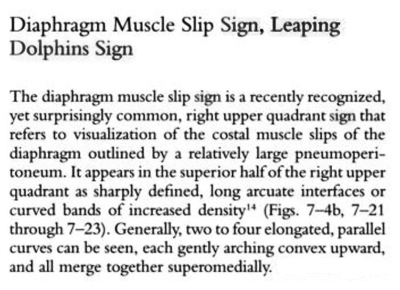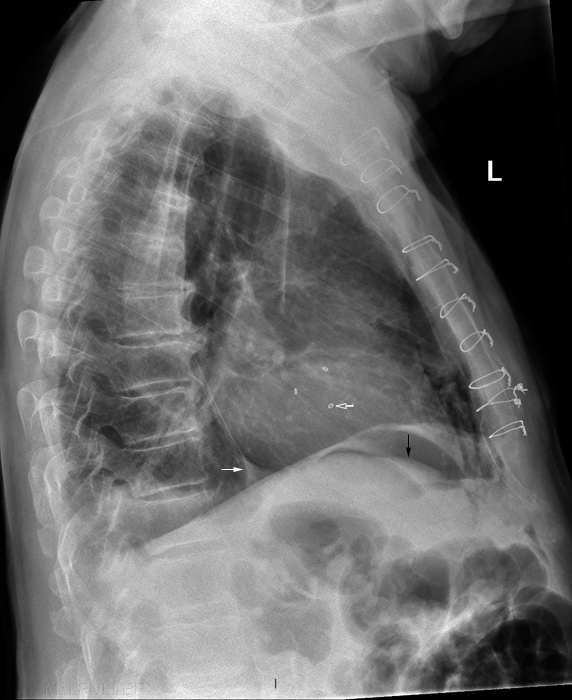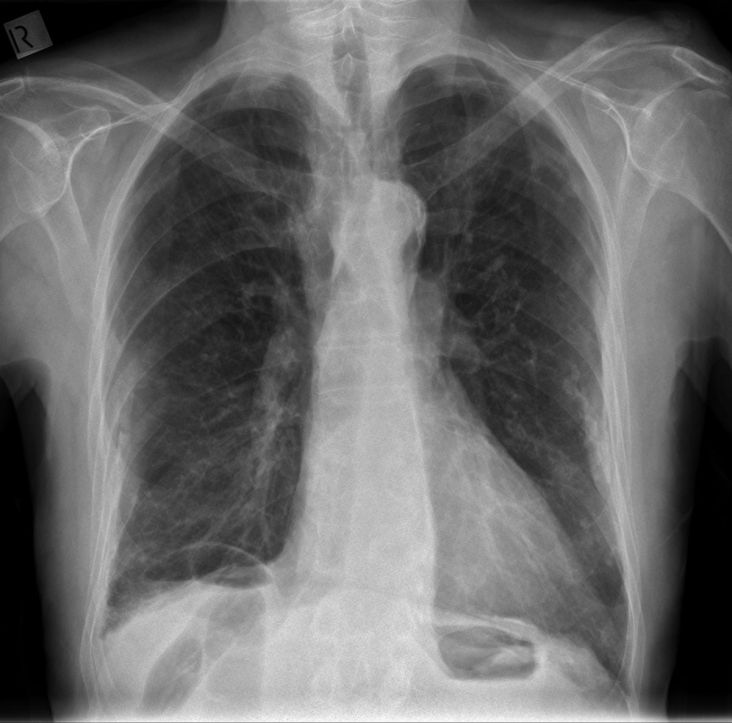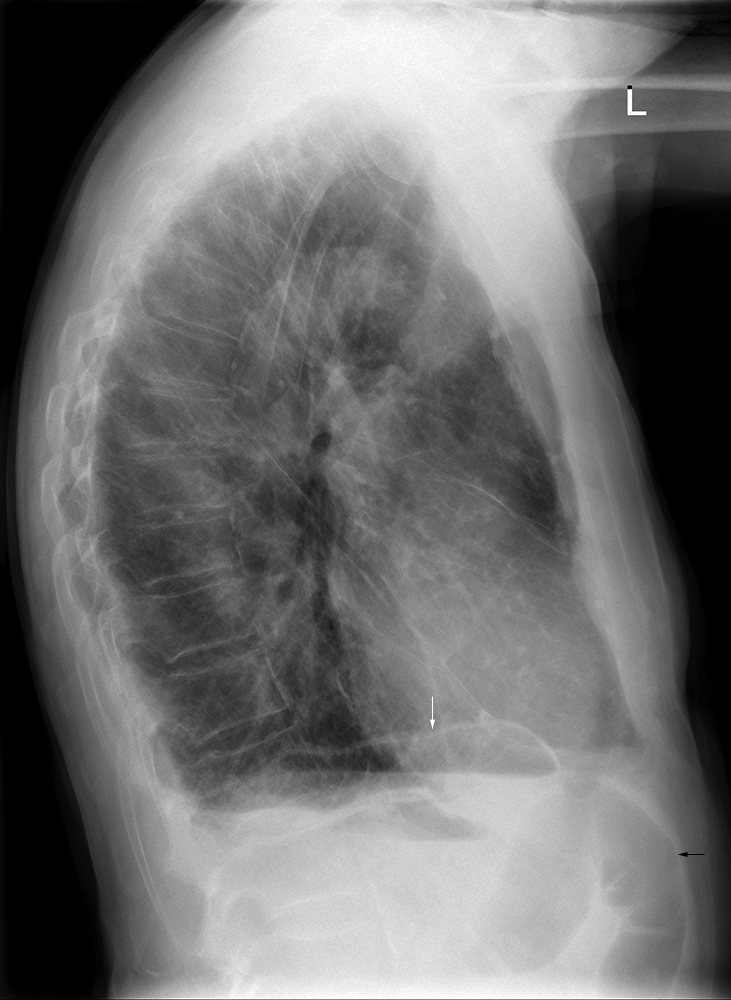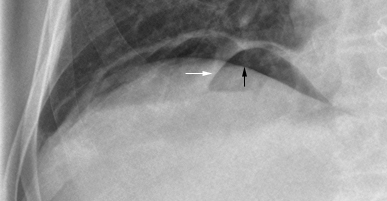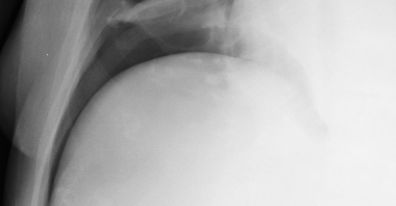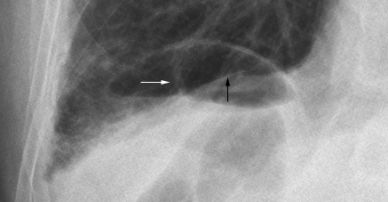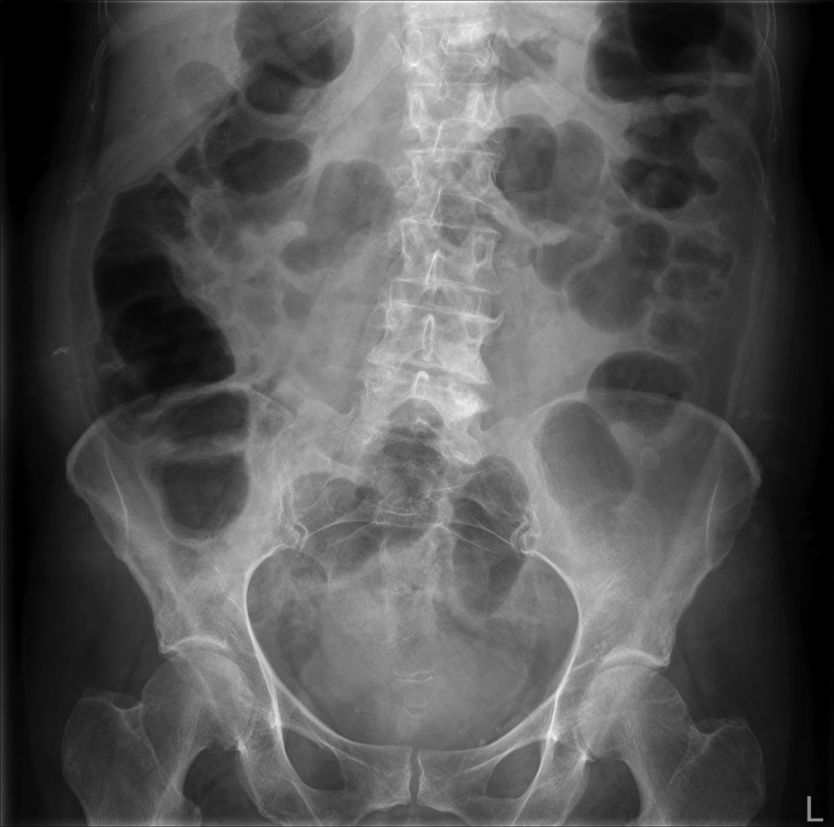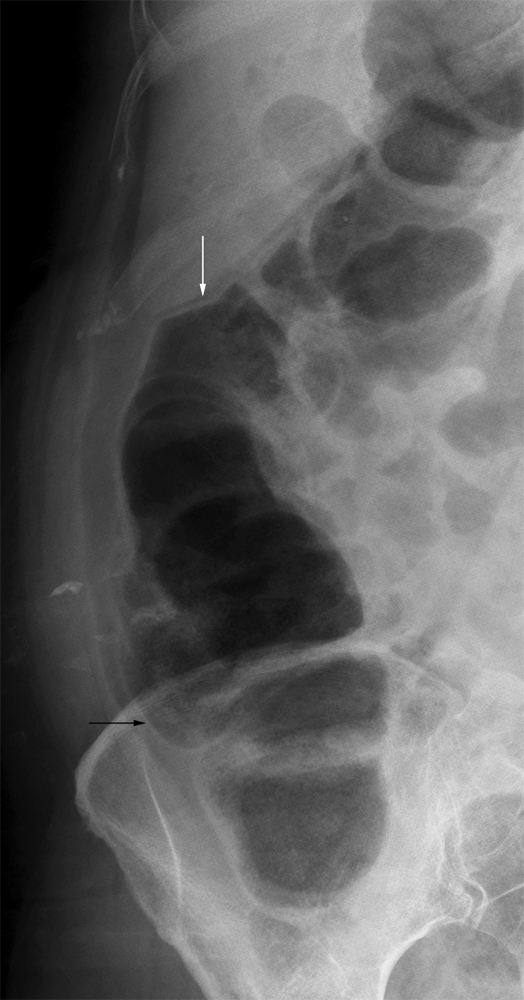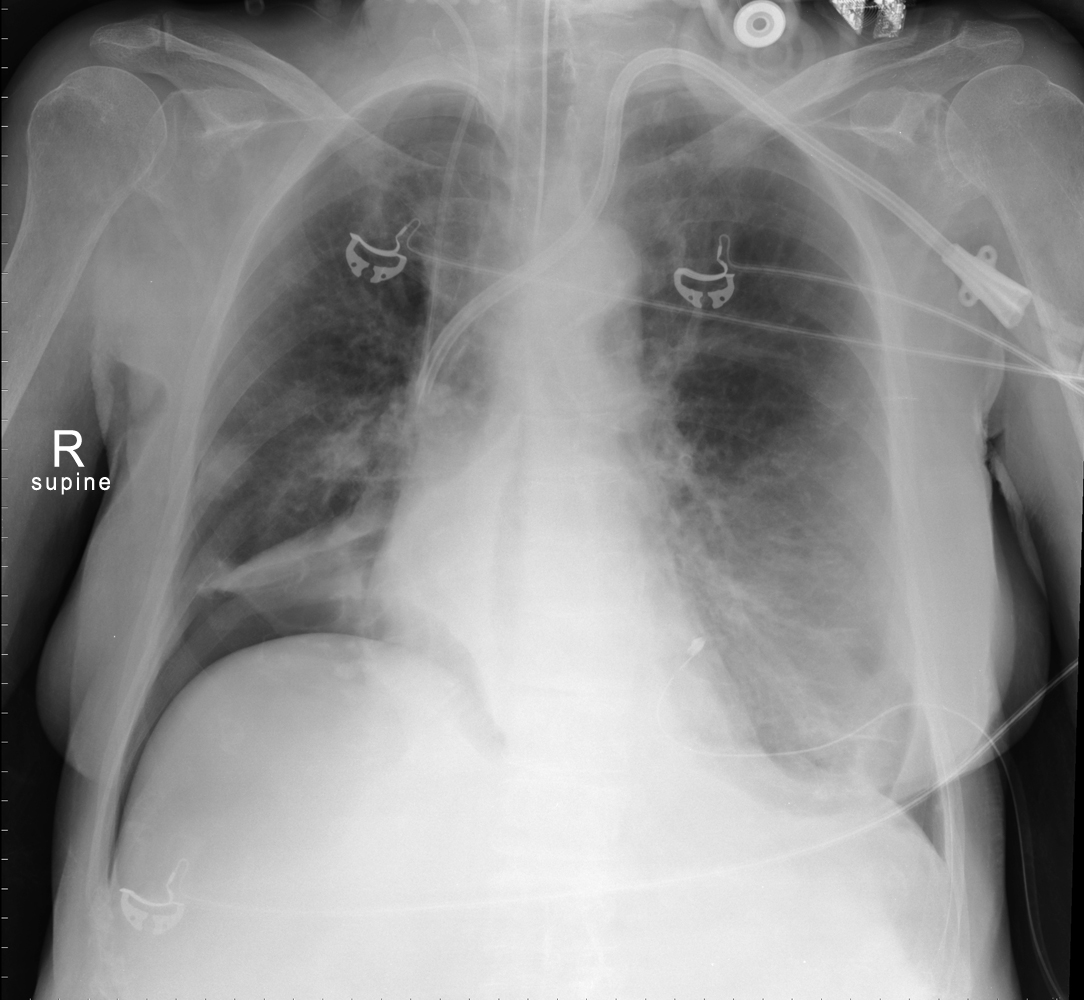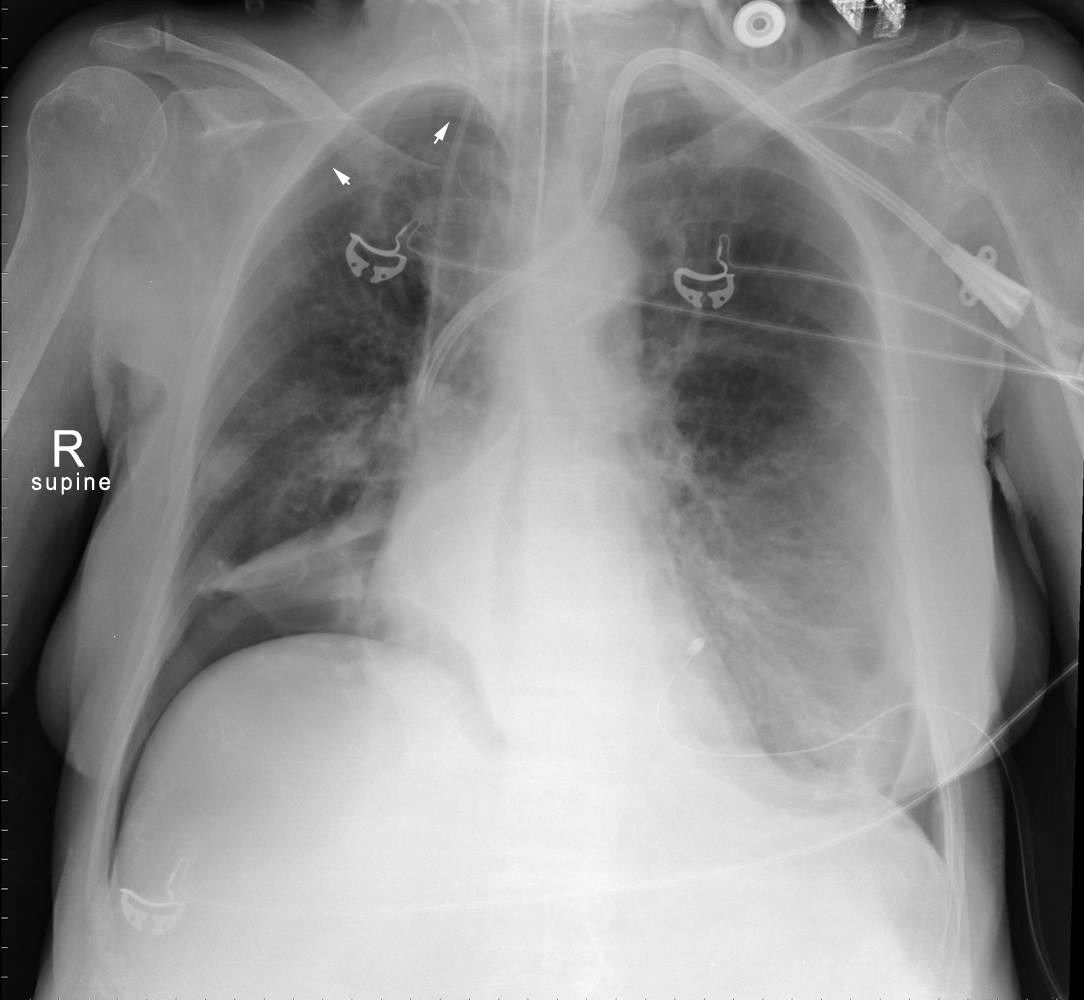Pneumoperitoneum
Pneumoperitoneum refers to the presence of free gas within the peritoneal cavity. The plain films signs of pneumoperitoneum are both diverse and sometimes difficult to identify. This page provides an overview of the plain film diagnosis of pneumoperitoneum.
Why is Pneumoperitoneum Important?
Pneumoperitoneum is most often caused by perforated abdominal viscus and can present an acute medical emergency.
“The Radiological signs of pneumoperitoneum are among the most important signs in radiology, indeed in Medicine. Sometimes the amount of free gas is small and you may have to work to demonstrate it (i.e. modify the film technique). Miss it and the patient may die”
Abdominal X-rays made easy. 2nd edition, James D. Begg
Churchill Livingstone, Elsevier, 2006
p94
Plain Film Signs of Pneumoperitoneum
Radiographers are more likely to demonstrate pathologies that they are familiar with. As James Begg stated, sometimes you have to 'work to demonstrate pneumoperitoneum'. What he meant by this is that the supine signs of pneumoperitoneum may be subtle- the radiographer must be able to identify the signs on the supine image and know what supplementary views will prove the existence of free intraperitoneal gas.
and look for what we know”
The plain film signs of pneumoperitoneum are well established in the literature as follows
1 Anterior Subhepatic Space Air 2 Doges Cap Sign (free Air in Morrison's Pouch) 3 Air Anterior to Ventral Surface of Liver 4 Rigler’s sign on supine AXR (also known as double-wall or bas-relief sign) 5 Falciform Ligament Sign 6 The ‘football’ sign 7 The cupola. Air accumulation beneath the central tendon of the diaphragm 8 Continuous diaphragm sign 9 The triangle- air trapped between three loops of bowel 10 Air under diaphragm on erect cxr 11 Air outlined against liver/flank on decub AXR 12 13 Abscess Gas 14 Pneumoretroperitoneum
RUQ/liver signs on supine AXR
There are 3 separate signs of free air around the liver as follows.
Pneumoperitoneum: Importance of Right Upper Quadrant FeaturesLESLIE MENUCK’ AND PAUL I. SIEMERS’Am J Roentgeno! 127:753-756. 1976
1. Anterior Subhepatic Space Free Air (RUQ sign 1)
2. Doges Cap Sign (RUQ sign 2)
Doges Cap sign refers to free air in Morrison's pouch. Morrison's pouch is normally a potential space between the right kidney and the liver. This is a particularly difficult sign of pneumoperitoneum for several reasons. Firstly, it may be the only sign of pneumoperitoneum and may be very subtle. Secondly, it can be easily misinterpreted as gas in the duodenum.
Gas in Morrison's pouch may have the following features
- Triangular in shape
- concave medial border
- positioned inferior to the right 11th rib
- positioned superior to the right kidney

- This sign is known as Doges Cap sign. The Italian Doges wore this distinctively shaped cap. Gas in Morrison's pouch is only loosely shaped like a Doges cap and should not be taken too literally. Bear in mind that the "triangle Sign" was already taken!
3. Air Anterior to Ventral Surface of Liver(RUQ sign 3)
4. Decubitus Abdomen Sign
5. Rigler’s Sign on supine AXR
6. Falciform Ligament Sign
7. The ‘football’ sign
The football sign likens the massively air-filled peritoneum to an American football. To extend the simile a little further, the falciform ligament has been likened to the seam in the football, and the rarely seen medial and lateral umbilical ligaments are likened to the football laces.
This neonatal patient has massive pneumoperitoneum and could reasonably be said to display football sign. There is also falciform ligament sign, Rigler's sign and air in the scrotum.<a class="external" href="http://shop.sportsmanswarehouse.com.au/images/product_images/1660/foot001.jpg" rel="nofollow" target="_blank">http://shop.sportsmanswarehouse.com.au/images/product_images/1660/foot001.jpg</a>
John W. Rampton, MD
The Football Sign
(Radiology 2004;231:81-82.)
© <a class="external" href="http://radiology.rsnajnls.org/misc/terms.shtml" rel="nofollow" target="_blank">RSNA</a>, 2004
There are a number of other signs of pneumoperitoneum that are less commonly seen. These signs are sufficiently rare to not warrant close examination. Equally, for reasons of completeness, they have been included on this page.
Sign Notes Reference Air under hemidiaphragm and diaphragmatic muscle slips visible Air contrasted urachus. Appears as vertical line between bladder and umbilicus. Outline of medial umbilical ligament <a class="external" href="http://www.google.com/" rel="nofollow" target="_blank">google</a> Air in the Fissure for the Ligamentum Teres. May appear in isolation. Appears as a lucent vertical stripe over liver Radiology; 1991. 178: 489 - 492 The coronary ligament is sited anterior to the liver. Pneumo-gall bladder Air in the gall bladder fossa outlining the gall bladder <a class="external" href="http://www.google.com/" rel="nofollow" target="_blank">google</a>
Case 1
This in-patient was referred for chest radiography following open mitral valve surgery. There appears to be free air under the right hemidiaphragm. This was interpreted as 'colonic interposition' (Chilaiditis sign) but I suspect that it is a 'leaping dolphins sign'. The appearance of septa within the air collection under the right hemidiaphragm is probably outlining the costal muscle slips of the hemidiaphragm rather than representing outline of bowel wall.
There also appears to be a negative 'silhouette sign' of the liver (black arrow).
There is an azygous lobe (white arrow).
There is a pleural effusion on the left.
[fromMorton A. MeyersDynamic radiology of the abdomen: normal and pathologic anatomy]The lateral chest image similarly demonstrates a negative 'silhouette sign' involving the liver (black arrow).
There appears to be a triangle of pleural fluid at the base of an inferior accessory fissure.
There are three metallic rings associated with the mitral valve surgery.
There is loss of visualisation of the left hemidiaphragm associated with a left pleural effusion.
Case 2
Discussion
Case 3
Case 4
Discussion
Pneumoperitoneum is an important plain film finding. Untreated, pneumoperitoneum has poor morbidity and mortality outcomes. Radiographers who are familiar with the plain film appearances of pneumoperitoneum, particularly the supine appearances, are more likely to undertake supplementary views to concusively demonstrate the pathology. Moreover, they will also have the opportunity to report the finding immediately to the referring doctor.
